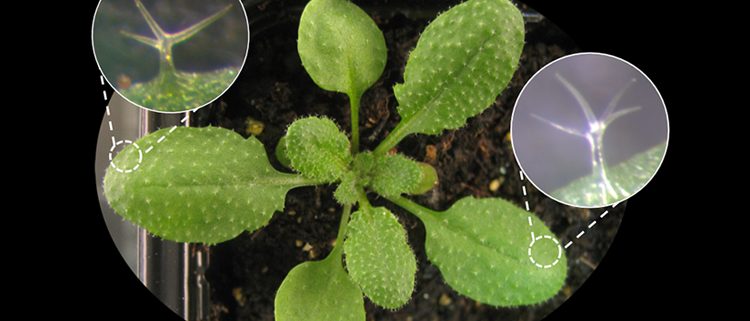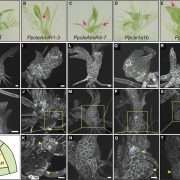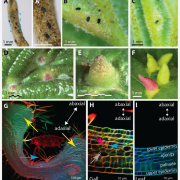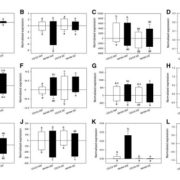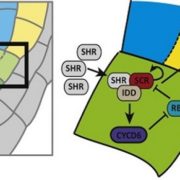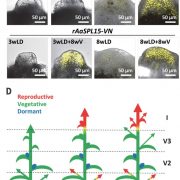Decoding RNA Methylation Regulates Trichome Branching
Scutenaire et al. show that a YTH domain protein acts as a reader of m6A mRNA modifications, thereby playing crucial roles in trichome branching, likely by acting on mRNAs in the cytosol. Plant Cell (2018). https://doi.org/10.1105/tpc.17.00854
By J. Scutenaire and C. Bousquet-Antonelli
Background: Messenger RNA (mRNA) molecules carry nongenetically encoded chemical modifications, the most abundant of which is the addition of a methyl group at position N6 of internal adenosines (m6A). At the molecular level, these m6A marks are “decoded” by so-called “reader” proteins carrying the YTH domain, a highly conserved and structured m6A-binding pocket. In recent years, the functions of YTH domain-proteins have been investigated in animals, where they were found to regulate several steps of mRNA metabolism. Although m6A marks are crucial for plant reproduction and development, and despite the identification of several YTH protein coding genes, studies of the functions and of m6As and YTH proteins in plants are lacking.
Question: To fill in this gap, we investigated the evolutionary history of YTH readers in green plants and initiated functional characterization of one of them as an m6A reader in the model plant Arabidopsis thaliana.
Findings: Using a systematic phylogenetic approach in a representative panel of plant species, we illustrate that all plant YTH domain proteins contain a canonical aromatic cage domain and can be classified in the two previously defined groups in metazoans. To get a closer view, we focused on the ECT2 protein from Arabidopsis and show that, as in animals, its m6A-binding ability is dependent on the presence of the three conserved amino acid residues of the aromatic cage. At the physiological level, when the ECT2 protein is either absent or defective in binding m6A-modified RNAs, we observed an abnormal trichome branching pattern (differentiated cells on aerial surfaces) and an increase in ploidy (number of chromosomes) in these cells. We propose that ECT2 is a functional m6A reader in Arabidopsis that plays a role in trichome development by regulating key m6A-modified transcripts (which are yet to be identified).
Next steps: We wish to identify the transcripts whose expression is controlled by ECT2-m6A activity and understand how they are regulated to permit proper cell cycle and trichome development.
Jérémy Scutenaire, Jean-Marc Deragon, Viviane Jean, Moussa Benhamed, Cécile Raynaud, Jean-Jacques Favory, Rémy Merret, and Cécile Bousquet-Antonelli. (2018). The YTH Domain Protein ECT2 is an m6 A Reader Required for Normal Trichome Branching in Arabidopsis. Plant Cell May 2018, 30: 986-1005; DOI: https://doi.org/10.1105/tpc.17.00854


